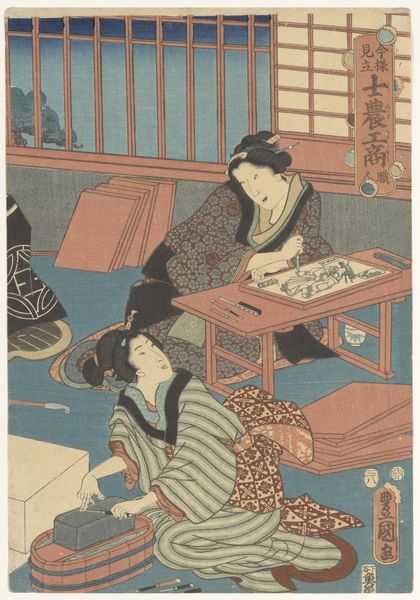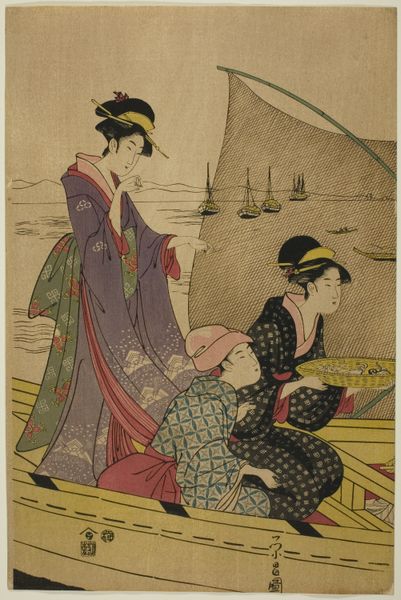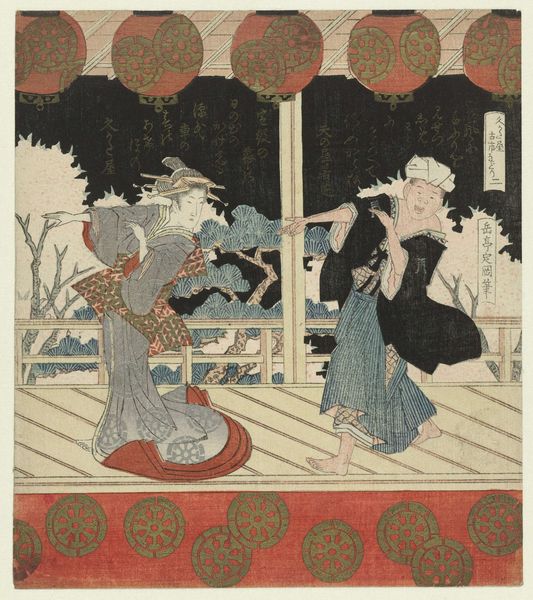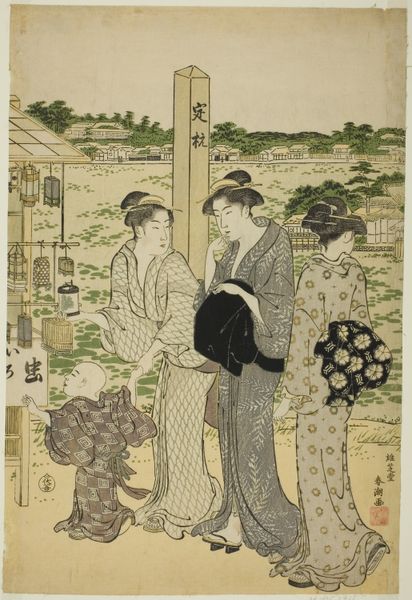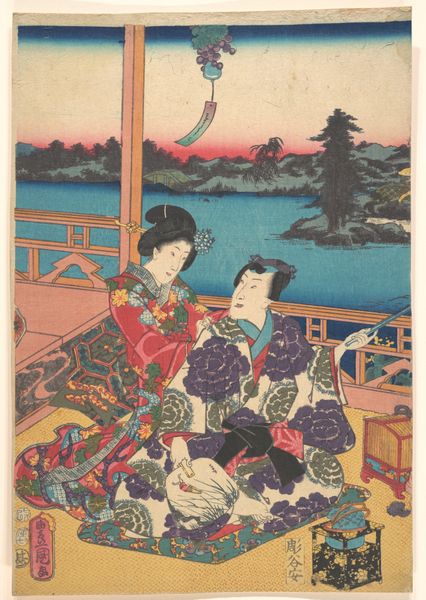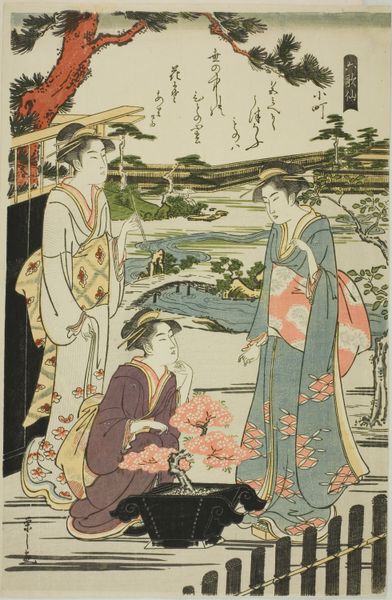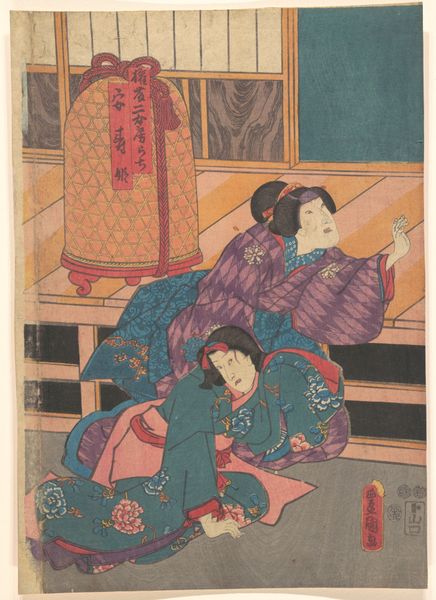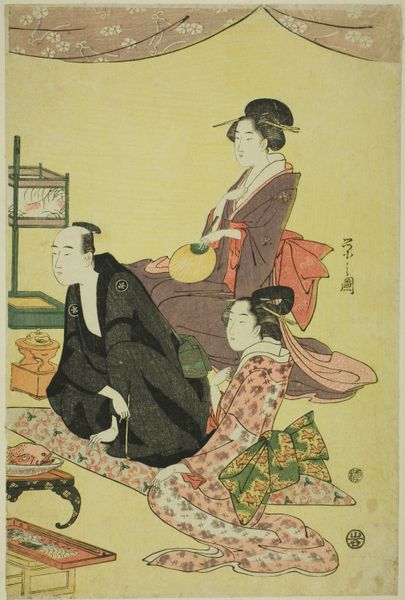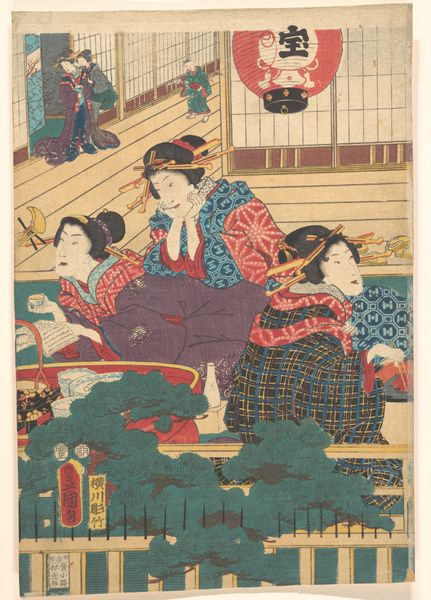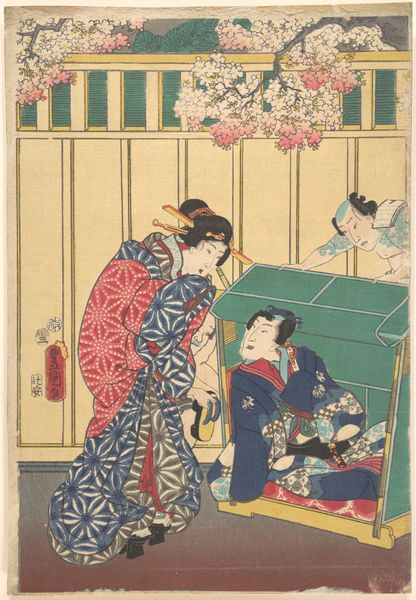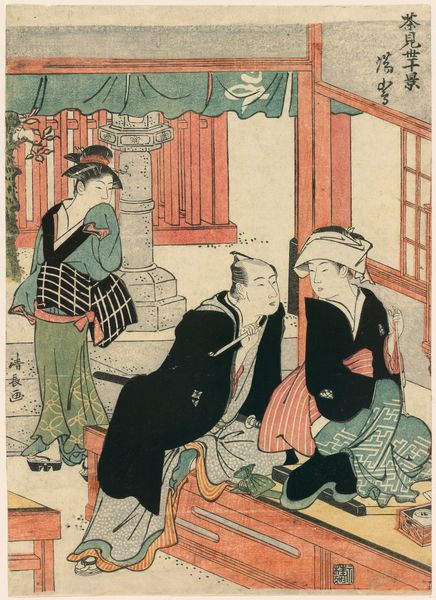
print, woodblock-print
# print
#
asian-art
#
ukiyo-e
#
figuration
#
woodblock-print
#
genre-painting
Dimensions: height 357 mm, width 256 mm
Copyright: Rijks Museum: Open Domain
Curator: This woodblock print by Utagawa Kunisada, called "Acteurs op toneel," and dating from around 1820 to 1830, presents us with a snapshot of figures in, presumably, a theatrical setting. What's your initial reaction? Editor: Well, there’s a pronounced contrast between the static figure on the left and the dynamism implied by the bending posture of the figure on the right. I'm also intrigued by the material layering – all the fabrics! You can really feel the weight and drape of the garments through the line work. Curator: Yes, absolutely! There's something dreamlike about how those fabrics almost seem to move of their own accord. The iris motif adorning the woman's kimono feels very evocative, maybe hinting at purity or perhaps the fleeting nature of beauty as performed on stage. Editor: Interesting. To me, the irises draw my attention to the incredible craft. Each colour, each line, carefully planned and executed. We see a complex process of layering colour blocks on paper. Curator: Agreed, the material aspect can't be overlooked! The Ukiyo-e tradition hinges on that very process – the artistry is embedded in the multiple stages of carving, inking, and printing. In viewing these actors backstage perhaps Kunisada offers a reflection on identity—both on and off stage. Editor: Exactly! The way their costumes are designed and constructed shapes their presentation. It reminds us that performance is constructed. It is about how we, through physical presentation, negotiate visibility and social standing. Even that architectural structure behind them suggests production of scenes. Curator: That architectural framework, yes, very thought-provoking. Almost a bridge between worlds – the performance itself and what is left behind the stage. A sense of movement that hints at transition or transformation. And also this slightly strange third person lurking! What to make of him? Editor: The presence of that observer and those architectural details leads to questions about audience, labour, and consumption that can't be detached from the final ‘art’ object itself. It allows the world behind to permeate the stage. Curator: A vital point. Thank you. It deepens the way we can consider it. Kunisada gives us much more than a portrait, it seems. Editor: Definitely. Now I'm curious about who the actual historical subjects were here and where those textiles ended up!
Comments
No comments
Be the first to comment and join the conversation on the ultimate creative platform.
